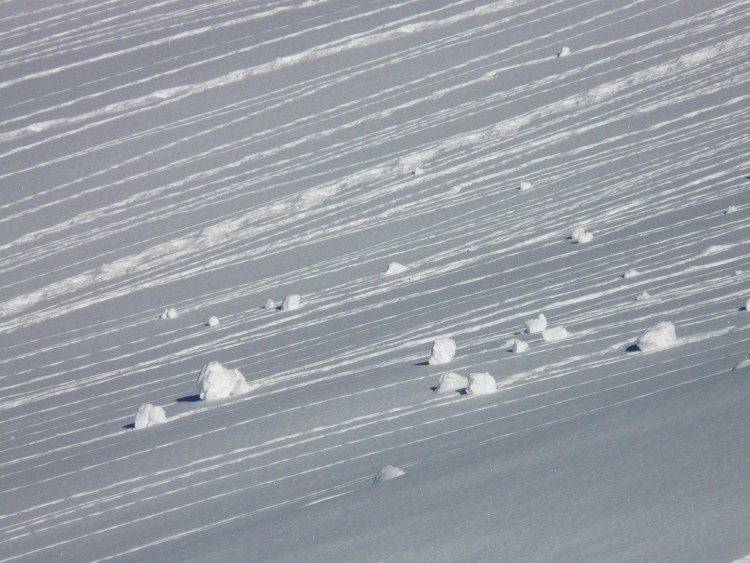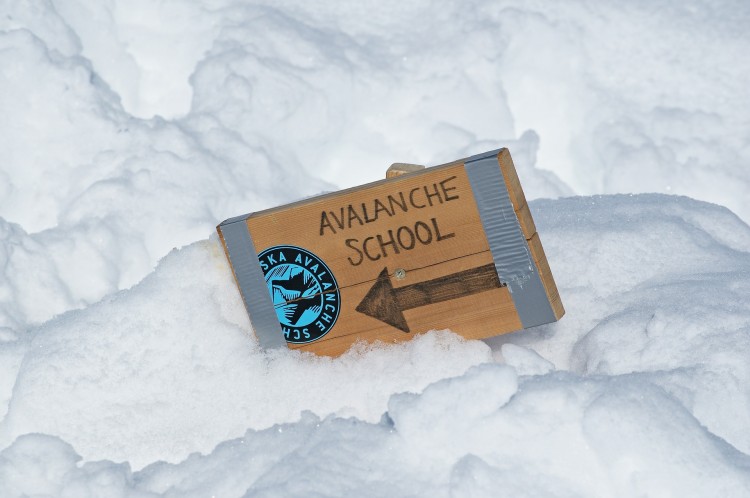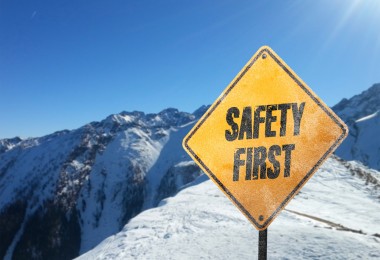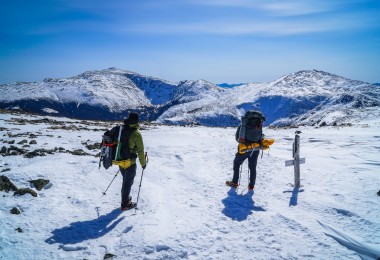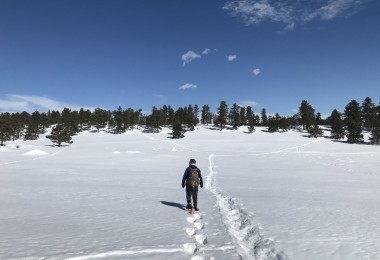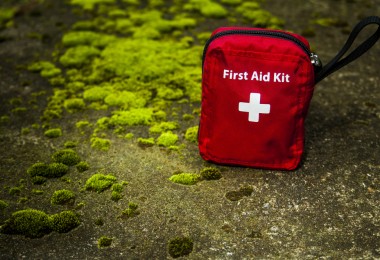Avalanches have already claimed 19 lives in Europe this season. Before the end of winter, there will be another 100,000 avalanches in the European Alps alone. Around the world, about 150 people will fall victim to the ‘white death.’
Here we answer some frequently asked questions about avalanches, including how to avoid them and stay safe.
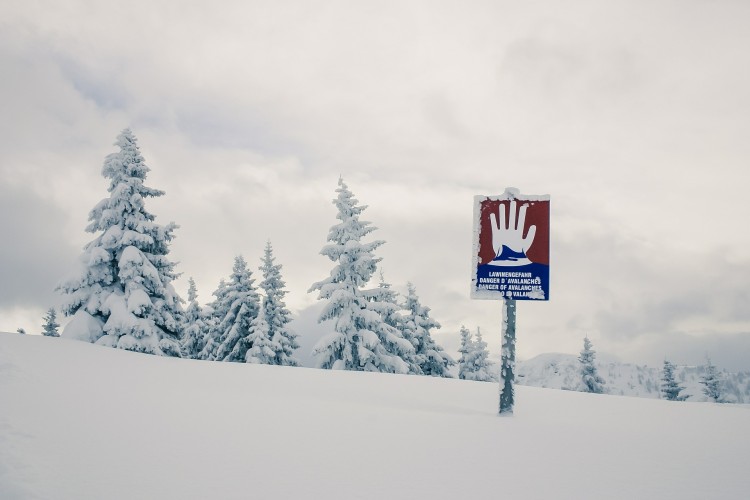
Avalanches can be incredibly destructive. Learn a few avalanche FAQs to be prepared. Photo: Markus Spiske via Pixabay
Some of the links in this article may contain affiliate links. When you purchase using these links, part of the proceeds go to Snowshoe Mag. Additionally, as Amazon Associates, we earn from qualifying purchases. Please see our disclosure for more details.
What damage can an avalanche cause?
Unless you have witnessed an avalanche, you will have minimal idea of their terrifying destructive force.
Speed
Avalanches have been clocked traveling at speeds of up to 360 km per hour (225 miles/hr), the top speed of a MacLaren F1 or Ferrari Enzo. So imagine a line of these supercars, often up to several hundred metres wide, racing towards you at high speed!
A typical dry snow avalanche travels around 130 km per hour (80 m/hr). It reaches this speed within five seconds after it fractures, with acceleration similar to a BMW 5 Series. As a result, there is little chance of outskiing an avalanche, let alone escaping on foot!
Force
The force of an avalanche depends a lot on its speed. However, a low-speed avalanche of about 20km per hour (12 m/hr) will generate enough force (100 kPa) to instantly uproot a mature spruce tree. On the other hand, uprooting that same tree would take a lumberjack armed with a chainsaw over an hour.
A high-speed powder avalanche can create forces of up to 1000 kPa, enough to move reinforced concrete structures, such as chalets and bridges. This force equates to about 145 psi, which is five times the pressure of your car tire. With these forces, avalanche debris is often compacted to the density of concrete.
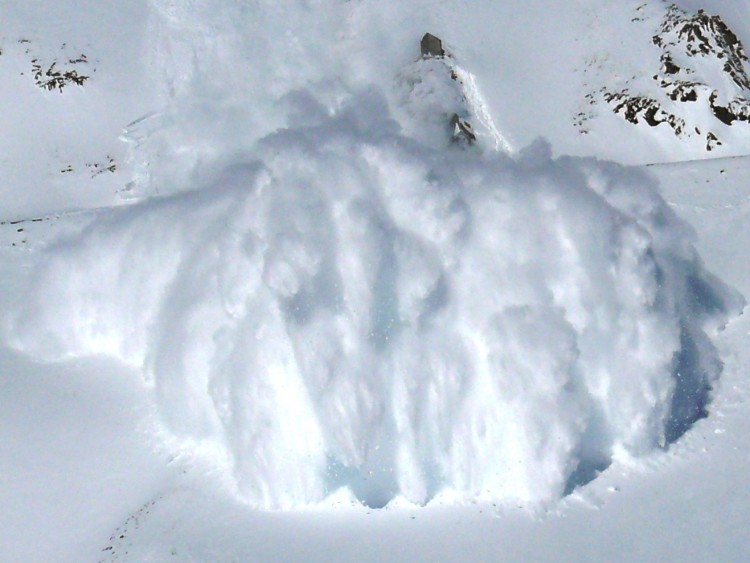
Avalanches can be deadly and an incredibly terrifying experience. All snowshoers need to have avalanche education. Photo: Scientif38 via Wikimedia Commons
What triggers an avalanche?
In approximately 90 percent of all avalanche accidents, the victim or someone in the victim’s party triggers the slide. Avalanches are the only natural hazard in the world that the victim commonly triggers.
Noise does not trigger avalanches. So although the idea is a convenient plot device in movies, don’t worry if Heidi is yodeling in the valley.
Keep an eye out for the warning signs to avoid triggering an avalanche.
Read More: Why All Snowshoers Should Be Avalanche Aware (Even Beginners)
Where do avalanches occur?
After all this doom and gloom, it’s important to state that you don’t need to become a snow scientist to stay safe. However, there are a few general principles and danger zones in the field that, if respected, will save your life.
Avalanches do not strike without warning. They happen in particular places due to specific combinations of snow and weather conditions. There are almost always visible signs that these conditions exist.
Slope angle
Most avalanches occur on slopes of 30 to 45 degrees, but large ones can occur on slopes as little as 25 degrees. You can measure these angles in the field with your trekking poles. Stand one pole vertically and the other horizontally, with one tip on top of the vertical pole and the other against the snow.
If the horizontal pole handle touches the snow, the angle is 45°. If you have to lower the horizontal pole to halfway down the vertical pole for the handle to touch the snow, the pitch is roughly 25°. Over 99.8 percent of avalanche accidents occur in the backcountry where there is no avalanche control.
Read More: Avalanche Safety Basics for Snowshoers: Warning Signs and Danger Zones
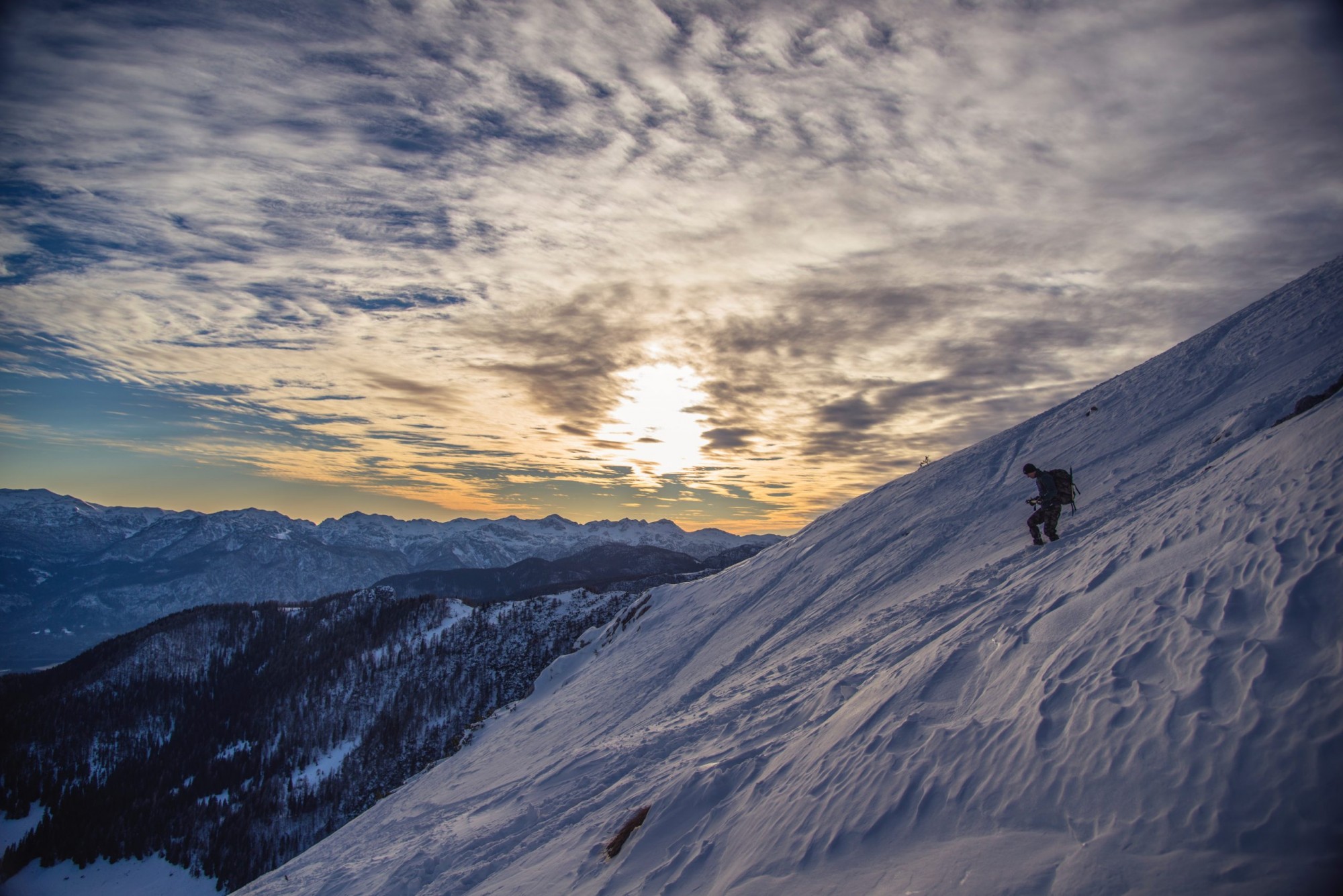
Most avalanches occur on slopes of 30 to 45 degrees. Be sure to check the slope angle to avoid the possibility of an avalanche. Photo: Ales Krivec via Unsplash
Why do avalanches happen?
Without diving too deep into the snow science, avalanches occur when a weak layer in the snowpack can no longer support the weight of a stronger layer/slab above it. You’ll need to judge two sets of factors for avalanche avoidance: first, how the stronger and weaker layers form, and second, how the weight of the stronger layer is affected.
For the first factor, the layers are mainly formed through temperature differences, creating different crystal shapes, water contents, and features such as depth hoar. Unless you get training in this field, the section on key warning signs below should suffice to keep you safe.
For the second factor, you can judge weight in the stronger slabs in the field. As mentioned above, the vast majority of avalanche victims caused (or someone else in the group caused) the avalanche that killed them. Therefore, you can minimize the group weight on the snowpack by traveling across risk areas one by one rather than as a group with a high combined weight.
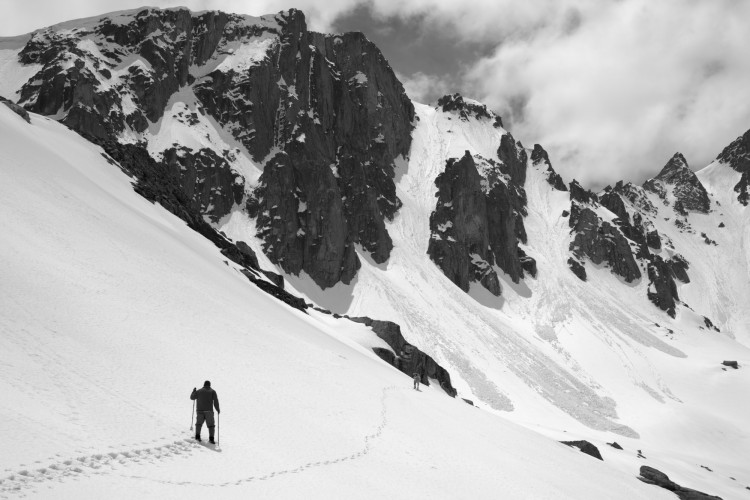
Be careful when snowshoeing near avalanche-prone areas. In this photo, there are several warning signs, including recent avalanches. Photo: Lizard via Shutterstock
What are the warning signs of an avalanche?
Here are a few other warning signs to look out for when snowshoeing.
Recent avalanches
The best warning is seeing evidence of recent avalanches. Don’t be lulled into a false sense of security, though, as several avalanches can follow the same route each season.
Shooting cracks
You may see shooting cracks in the snow, a sign of slab formation. Also, if there is any evidence of recent high winds or snow drifting, be extra vigilant, as windslab avalanches could occur.
Collapsing snow
Another warning sign is when the snow collapses in a wide area around your weight, which indicates a hard slab over a weaker layer. Finally, be extremely careful if there is a forecast for rain or snow during your outing. The weight of water entering the snowpack can trigger a natural avalanche.
Sun balls
Another common warning sign to look out for is sun balls. Imagine making a snowball by rolling some snow down a slope so it accumulates, which will look like a sun ball.
Sun balls form naturally by solar warming, which causes some snow to slough and fall down the slope, accumulating as it travels. They are also a warning sign of a large temperature gradient, which can cause instability in the snowpack.
Slope features
The most dangerous avalanches usually occur on convex slopes, as there is significant stress within the snowpack as it bends over the rounded slope. Look at the contours on your map to identify these slopes before you set off.
Leeward (downwind side of a ridge or mountain) slopes are also hazardous because windblown snow adds depth, creating hard, hollow-sounding wind slabs.
If you are going out, keep to non-corniced ridges or windward slopes. Following an old track does not necessarily mean a slope is safe, as the wind direction may have changed. Look out for raised footprints, as this is a sign of wind scouring, and the incidence of windslab on the mountain will be high.
Terrain Traps
Plan your route to avoid terrain traps, which are the likely tracks that an avalanche will follow when triggered. A prominent example of a terrain trap is a gully, which acts as a natural avalanche chute.
Weather
Most natural avalanches occur within a day of heavy snowfall. However, a whole mountain may become hazardous during a snowfall of an accumulation rate of an inch or more an hour. If this is forecast, it is best to head down to the pub for the day.
Be aware of the weather during the day for avalanche avoidance. Rapid changes in wind, temperature, and snowfall cause changes in the snowpack and may affect stability.
Read More: 6 Ways To Refresh Your Safety for Winter Hiking and Snowshoeing
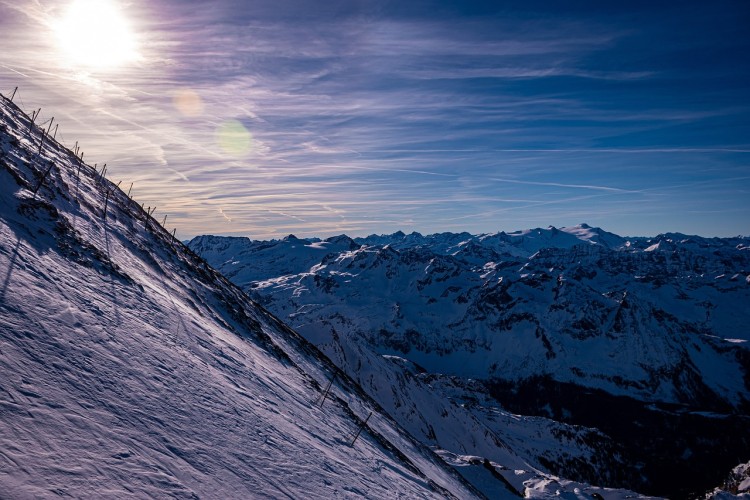
Be careful of changing weather conditions while out, substantial snowfalls, rapidly shifting weather, or warming. Photo: Ri Butov via Pixabay
How should I prepare for avalanches?
Before going out onto the mountain, prepare by doing the following.
Check the advisory
Over 90 percent of avalanche fatalities did not check the avalanche advisory before heading out. Therefore, checking the forecast is imperative for avalanche avoidance. These avalanche forecasts are available online, by phone, at cable car stations, tourist offices, and radio reports in mountain areas.
Check out the Scottish Avalanche Information Service website for avalanche forecasts in the U.K. For U.S. avalanche forecasts, visit avalanche.org, and for Canada, visit Avalanche Canada.
Bring the equipment
You should pack your avalanche safety kit, which includes an avalanche transceiver, probe, and snow shovel. These are essential for everyone on the team.
Get trained
In the event of an accident, there are a ‘golden’ 15 minutes to recover a buried victim before their survival chances plummet. After thirty minutes, survival chances decrease from 93% to 50%, down to 26% after forty-five minutes, and 5% after two hours.
With statistics like this, you need to practice and get professional training. Ensure you turn off your phone, as the signal can seriously affect transceivers. Furthermore, ensure that you wear your transceiver close to your body, not in a pocket or rucksack, so it doesn’t get separated from you in the event of an avalanche.
Read More: Avalanche Awareness for Snowshoers
What should I do in an avalanche?
If caught in a slide, try to get off the slab. Alternatively, grab a tree as soon as you can. After a few seconds, it will be impossible because of the rapid acceleration of the avalanche. The human instinct for survival will kick in, and you will try and ‘swim’ to the surface. Without doing this, you will sink below the surface, as snow can be up to 90% air, and the human body is denser.
Three-quarters of victims die from asphyxiation (breathing their carbon dioxide), and a quarter of victims die from trauma caused by hitting trees and rocks on the way down. Only 2 percent live long enough to die from hypothermia. Due to the asphyxiation concerns, keep your mouth closed, and don’t shout or cry out. If you stay conscious as you feel the avalanche come to a stop, it is essential to try and protect your head with your arms to create an air pocket to help you breathe.
Another popular myth is if buried that you can spit out of your mouth to work out which way is up and down. Considering that a cubic meter of snow weighs 250kg (the weight of a fully grown male lion), you won’t manage to dig yourself out. Some fatalities have been recovered from just 10cm (4 in) beneath the surface.
What do search and rescuer do in an avalanche?
The full scope of what rescuers do is really beyond this article. But you cannot rely on emergency services to assist and not prepare otherwise. Typically, the call-out response time is over 20 minutes, beyond the ‘Golden’ 15 minutes.
If avalanched, you are more likely reliant on your equipment and the training of your companions. The key lesson of this is never to travel alone in avalanche terrain. Being reliant on equipment and training may be a sobering thought, so if in doubt, make sure you’re prepared.
If you have witnessed an avalanche in the field, call for assistance. The victims are likely to have suffered trauma, shock, and hypothermia. If you cannot locate the victims, the rescue teams may bring in trained searchers and dogs. Our four-legged friends can find a buried victim eight times faster than a 20-person team equipped with avalanche probes.
Overall
We can avoid the vast majority of avalanche accidents with little knowledge. Almost all avalanche accidents occur with people who are very skilled in their sport. Despite this expertise, their avalanche skills usually lag far behind their sports skills.
So be very diligent about your planning before you set out and get avalanche and weather forecasts. Let someone know where you are traveling. Additionally, ensure you go with a friend(s) and equip everyone with avalanche safety kits.
On the hill, don’t be afraid to change your plans in reaction to warning signs that you identify. If any risk is identified, minimize it by reducing your impact on the snowpack.
Increasingly, travelers are willing to see the safety precautions as a necessary part of the day rather than a bit of a drag. The key to safety in mountainous conditions is some basic avalanche awareness knowledge.
What other avalanche avoidance tips do you recommend? Please share your thoughts with us in the comments below.
This article was first published on October 9, 2008. It was reformatted in December 2019 and most recently updated on January 10, 2023.
Read Next: Safety First: Snowshoeing Hazards and How To Avoid Them

